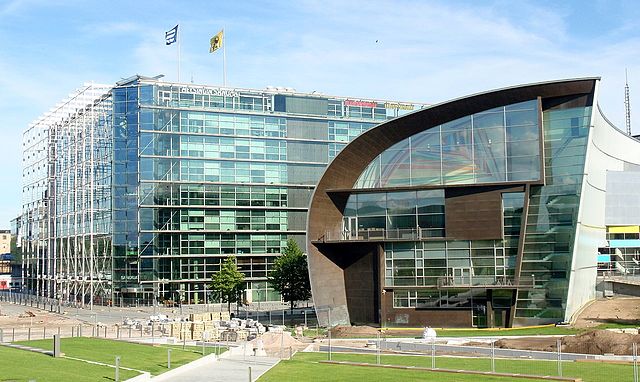Carl Ludvig Engel, or Johann Carl Ludwig Engel, was a German architect whose most noted work can be found in Helsinki, which he helped rebuild. His works include most of the buildings around the capital's monumental centre, the Senate Square and the buildings surrounding it. The buildings are Helsinki Cathedral, The Senate, the Helsinki City Hall, and the library and the main building of Helsinki University.
A portrait of Carl Ludvig Engel, by Johan Erik Lindh
Drawing by Engel of Helsinki in 1820
The main building of the University of Helsinki
The Senate Square and Lutheran Cathedral in Helsinki
Helsinki is the capital and most populous city in Finland. It is located on the shore of the Gulf of Finland and serves as the seat of the Uusimaa region in southern Finland. Approximately 675,000 people live in the municipality, with 1.25 million in the capital region, and 1.58 million in the metropolitan area. As the most populous urban area in Finland, it is the country's most significant centre for politics, education, finance, culture, and research. Helsinki is situated 80 kilometres (50 mi) to the north of Tallinn, Estonia, 360 kilometres (220 mi) to the north of Riga, Latvia, 400 kilometres (250 mi) to the east of Stockholm, Sweden, and 300 kilometres (190 mi) to the west of Saint Petersburg, Russia. Helsinki has significant historical connections with these four cities.
Image: Helsingin ydinkeskustaa ja Mannerheimintien alkupäätä Erottajan paloaseman tornista (cropped)
Image: Suomenlinna (cropped)
Image: Sanomatalokiasmahelsinki
Image: Eduskuntatalo Helsinki








